intermittent fasting
description: a diet that cycles between a period of fasting and non-fasting
45 results

The Fast Diet: Revised and Updated: Lose Weight, Stay Healthy, Live Longer
by
Mimi Spencer
Published 18 Dec 2014
Professor Mark Mattson of the National Institute on Aging in Baltimore is adding all the time to the dozens of research papers he has already published on the effects of fasting and intermittent fasting on the brain. We are particularly interested to see the outcome of some of his current studies, which include looking further into what happens to the brains of volunteers when put on an intermittent fasting regime. He is keen to emphasise the importance of regular exercise alongside intermittent fasting, as many of the changes he sees, whether it’s improving glucose regulation or the effects on the brain, are similar with exercise and intermittent fasting. Any form of exercise is better than nothing, but there is currently a lot of excitement around HIT (high intensity training), which seems to produce greater changes in less time.
…
It has been two years since we wrote the first edition of The Fast Diet and over that time a great deal has changed, so we decided it was time to update the book. A number of new studies on intermittent fasting have been published and I wanted to include them. There are also important health areas which we didn’t feel ready to include in the original book, but which we have been frequently asked about, including research into the effects of intermittent fasting on inflammatory diseases such as asthma, eczema and psoriasis. We have included an enlarged section on exercise, as it is clear that combining exercise with intermittent fasting is likely to lead to greater improvements. There is also an interesting new study that has looked at the effects of combining intermittent fasting with a novel form of exercise, High Intensity Training.
…
I simply don’t have the willpower or desire to live permanently on an extreme low-calorie diet. So I was delighted to discover intermittent fasting, which involves eating fewer calories, but only some of the time. If the science was right, it offered the benefits of calorie restriction, but without the pain. I set off around the US, meeting leading scientists who generously shared their research and ideas with me. It became clear that intermittent fasting was no fad. But it wouldn’t be as easy as I’d originally hoped. As you’ll see later in the book, there are many different forms of intermittent fasting. Some involve eating nothing for 24 hours or longer. Others involve a single, low-calorie meal once a day, every other day.

The 5:2 Fast Diet for Beginners
by
Rockridge Press
These results are promising for those looking to reduce risk of heart disease through intermittent fasting. Intermittent Fasting and Brain Health Mark Mattson of the National Institute on Aging has done a great deal of research on intermittent fasting. His findings suggest that intermittent fasting boosts the production of brain-derived neurotrophic factor (BDNF), which is a protein that stimulates brain stem cells to become new neurons. It also protects brain cells from neurological degenerative disorders such as Alzheimer’s and Parkinson’s disease. According to Mattson’s research, intermittent fasting can boost the production of BDNF by anywhere from 50 to 400 percent.
…
It’s not only a healthier alternative to some popular fasting plans, but is also much easier (and more pleasurable) to stick with than some of the more extreme intermittent fasting diets. Losing weight and body fat is about more than looking good temporarily; it’s about feeling good, learning to eat in a healthy and sustainable way, and improving your overall health and quality of life. That’s the mission of the 5:2 Fast Diet. WHAT IS INTERMITTENT FASTING? Intermittent fasting is not a starvation diet. On the other hand, it’s also not a way to eat a steady diet of junk food and get away with it. Intermittent fasting is a planned schedule of eating that allows you to eat a normal, healthy diet most of the time, and then requires you to spend a short period of time consuming far less food.
…
Intermittent fasting is a planned schedule of eating that allows you to eat a normal, healthy diet most of the time, and then requires you to spend a short period of time consuming far less food. There are some intermittent fasting plans that divide fasting and non-fasting periods into mere hours, such as eight hours of eating followed by twelve or sixteen hours of fasting. More commonly, intermittent fasts are divided by days of the week. On the 5:2 Fast Diet, you eat a “normal” diet for five days of the week, interspersed by two days of fasting. Although the research on intermittent fasting is still in the beginning stages, there is sufficient evidence that eating in this way can help to shed fat, regulate some of the hormones associated with obesity and hunger, and even improve overall cholesterol levels.

Beyond Bigger Leaner Stronger: The Advanced Guide to Building Muscle, Staying Lean, and Getting Strong
by
Michael Matthews
Published 15 Jun 2014
It’s like a systemic reset button, allowing for the disposal of waste and the reparation of cells and the optimization of the body’s many processes. SHOULD WE ALL BE FOLLOWING AN INTERMITTENT FASTING DIET, THEN? At this point, you’re probably expecting me to say that intermittent fasting truly is the way to go. Well, there’s more to the story. Intermittent fasting is still in its scientific infancy, with only a handful of controlled human studies under its belt. Sure, we know that fasting itself has health benefits, and we know that intermittent fasting protocols work in terms of losing fat and building muscle, but the real question is, Do they work better than traditional, continuous energy diets?
…
The bottom line is if the idea of eating fewer, larger meals every day sounds appealing, then you may want to give intermittent fasting a try. If not, then it’s probably not going to be for you. Another circumstance in which I would recommend you give intermittent fasting a try is if, despite using all the strategies discussed in the chapter on getting really lean, you still are having trouble getting there. Intermittent fasting can be particularly good for helping get rid of the last bits of stubborn fat. Now, let’s move on to the next dietary protocol I’d like to cover, which is known as carb cycling. Like intermittent fasting, carb cycling is quite popular in bodybuilding circles, but it is also quite misunderstood by many gymgoers.
…
Well, they don’t, and they actually are quite healthy.191 192 • Even the still-trendy dogma that eating carbohydrates will automatically make you fat is on its way out. As scientists learn more and more about how the human body works and how to manipulate it, genuine breakthroughs are made that help us improve our physiques and live longer, healthier lives. Is intermittent fasting one of these breakthroughs? Or is it just another way to sell magazines, books, and workout products? Let’s find out. THE BASICS OF INTERMITTENT FASTING Intermittent fasting (or IF as many people call it) is a style of dieting that revolves around restricting your eating for extended periods of time and then eating your day’s worth of food during predetermined feeding windows.
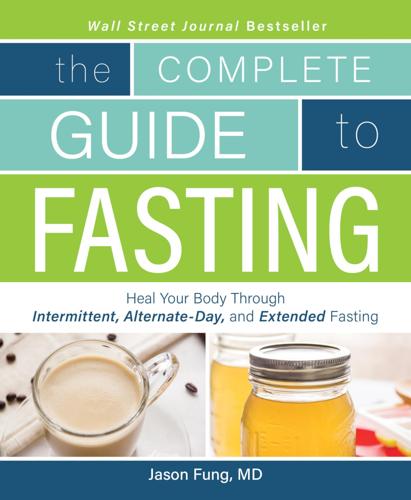
Complete Guide to Fasting: Heal Your Body Through Intermittent, Alternate-Day, and Extended Fasting
by
Jimmy Moore
and
Jason Fung
Published 18 Oct 2016
What matters most is our insulin response to food, since obesity is largely a problem of excessive insulin. And when it comes to insulin, as we’ve discussed in Chapters 5 and 6, the timing and frequency of meals is as important as the composition of the meal. That is, the question of when to eat is as important as what to eat. It is precisely here that intermittent fasting may help us the most. What Is Intermittent Fasting? The term intermittent fasting simply means that periods of fasting occur regularly between periods of normal eating. How long each period of fasting lasts, and how long the period of normal eating lasts, can vary widely. There are many different fasting regimens, and there’s no “best” one.
…
And back in 2006, I didn’t fully comprehend the positive benefits fasting would someday provide me, including its amazing effects on my cholesterol and blood sugar. I first heard about the concept of intermittent fasting from Dr. Michael Eades, author of the bestselling book Protein Power. In 2006, Dr. Eades began writing about the great success with weight loss and other health benefits he had seen with something called intermittent fasting, or IF. It was a new idea at the time to go periods of time without eating anything at all, on a regular basis, and the way he described it seemed relatively doable: stop eating at 6:00 p.m. and then don’t eat again until 6:00 p.m. the next day.
…
But as skeptical as I was about intermittent fasting, a one-week fast freaked me out even more. Who could actually do that? But by that point I’d heard enough to convince me to give fasting a try. Needless to say, I had to get my head around IF before I even dared try a multiple-day fast, and being the nothing’s-too-hard adventurer that I was, I decided to try it. Boy oh boy, what was I getting myself into?! My First Attempt at Fasting Okay, before we get to the good stuff about fasting, I have to be honest about the bad stuff, and all I have to say about my first attempt at alternate-day intermittent fasting—fasting for twenty-four hours every other day—is ugh, ugh, and UGH!

Hormone Repair Manual
by
Lara Briden
Published 14 Apr 2021
It’s also called hyperinsulinemia, metabolic syndrome or prediabetes, and is a major player in abdominal weight gain and many other menopausal symptoms. Identifying and reversing insulin resistance will be one of the most important parts of your menopause journey. I’ll explain why in Chapters 4, 5, 7 and 8, where I’ll also explain the role of relative testosterone dominance, and provide treatment strategies such as intermittent fasting. INTERMITTENT FASTING Intermittent fasting is daily cycling between periods of fasting and eating. The perimenopause sequence of events is: 1 lower progesterone 2 high and wildly fluctuating estrogen 3 lower estrogen 4 possible insulin resistance. On average, the entire natural perimenopause transition takes about seven years, and Professor Prior breaks it down into the following four phases plus menopause, which we’ll explore in more detail in Chapter 4: 1 very early perimenopause, when cycles are still regular 2 early menopause transition, from the onset of irregular periods 3 late menopause transition, from the first cycle of more than sixty days 4 late perimenopause, which is the twelve months from the final period + menopause, which is the life phase that begins one year after your last period.
…
TIP Do not eat in the morning until you’re hungry, and then eat a protein-rich meal such as a frittata or omelette, leftover meat, or protein powder. Intermittent fasting Intermittent fasting is cycling between periods of fasting and eating, and is a simple way to improve insulin sensitivity. When you restrict food, even for a relatively short time, you train your mitochondria to burn ketones rather than glucose, thereby cultivating the metabolic flexibility you need for weight loss, a healthy brain and relief from perimenopausal symptoms. Other benefits of fasting include promoting healthy gut peristalsis, upregulating anti-inflammatory cytokines and boosting brain-derived neurotrophic factor (BDNF). Intermittent fasting also stimulates the beneficial process of autophagy, which means your body ‘eats itself’ (auto: self, phage: eat), which sounds bad but gives your cells the opportunity to remove and recycle damaged parts and replace them with healthy new parts.
…
Moving in and out of ketosis is gentler and easier than trying to stay in ketosis all the time, and starch with the evening meal will calm your nervous system, feed your gut microbiome and help you to feel full. Won’t fasting make you feel hungry? First, please don’t attempt intermittent fasting if you’re already underweight or underfed, in which case you don’t have insulin resistance, and, therefore, don’t need intermittent fasting. Second, don’t attempt intermittent fasting if you’re also trying to restrict calories. The whole premise of the eating window is to eat to satiety during that time. Third, don’t be afraid of hunger, in particular, the bedtime hunger you might encounter if you’re used to snacking in the evening.

The Obesity Code: Unlocking the Secrets of Weight Loss
by
Jason Fung
Published 3 Mar 2016
Persistent exposure to decreased calories results in adaptation (resistance); the body eventually responds by reducing total energy expenditure, leading to the dreaded plateau in weight loss and eventually to weight regain. A 2011 study compared a portion-control strategy to an intermittent-fasting strategy.33 The portion-control group reduced daily calories by 25 percent. For example, if a person normally ate 2000 calories per day, he or she would reduce intake to 1500 calories per day. Over a week, he or she would receive a total of 10,500 calories of a Mediterranean-style diet, which is generally acknowledged to be healthy. The intermittent-fasting group got 100 percent of their calories for five days of the week, but on the other two days, got only 25 percent.
…
At six months, weight loss was similar between the groups (14.3 pounds, or 6.5 kilograms)—but as we know, in the short term, all diets work. However, the intermittent fasting group showed significantly lower insulin levels and insulin resistance. Intermittent diets produced far greater benefits by introducing periods of very low insulin levels that help break the resistance. Further studies34, 35 confirm that the combination of intermittent fasting with caloric restriction is effective for weight loss. The more dangerous visceral fat seems to be preferentially removed. Important risk factors, including LDL cholesterol (low-density lipoproteins), size of low-density lipoproteins and triglycerides, were also improved.
…
Part 6, “The Solution,” provides guidelines for lasting treatment of obesity by addressing the hormonal imbalance of high blood insulin. Dietary guidelines for reducing insulin levels include reducing added sugar and refined grains, keeping protein consumption moderate, and adding healthy fat and fiber. Intermittent fasting is an effective way to treat insulin resistance without incurring the negative effects of calorie reduction diets. Stress management and sleep improvement can reduce cortisol levels and control insulin. The Obesity Code will set forth a framework for understanding the condition of human obesity.
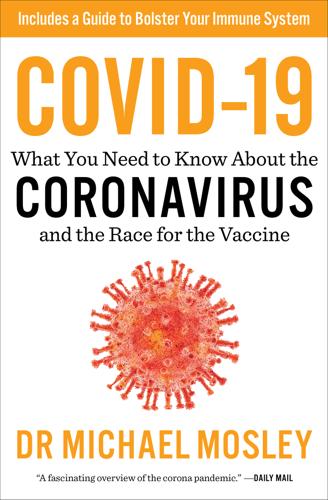
COVID-19: Everything You Need to Know About the Corona Virus and the Race for the Vaccine
by
Michael Mosley
Published 1 Jun 2020
There is good evidence from big, randomized trials that an 800-calorie diet is also one of the best ways to reverse type 2 diabetes and rid yourself of metabolic syndrome (see page 88). 2. Try intermittent fasting Intermittent fasting, where you cut your calories a couple of days a week, is a popular way to lose weight. The 5:2 diet (which I’m famous for) and Time Restricted Eating, where you only eat within a 10-hour window each day, have both been shown to help people lose weight. But intermittent fasting has other health benefits, including potentially helping improve your immune system. More on that in a moment. 3. Eat a more Mediterranean-style diet The traditional diet of Mediterranean countries, rich in olive oil, nuts, oily fish, and legumes, is regularly voted by health professionals as the healthiest diet on the planet.
…
“If you decide to do rapid weight loss then this will result in rapid normalization of your blood sugar levels and bring down your of risk of reacting badly to Covid-19 should you contract it, within days or weeks.” Try Intermittent Fasting I appreciate that there are people who don’t want to do a rapid weight loss approach, aren’t suitable for it, or don’t want to do it for long. If you have tummy fat you want to lose I would still recommend a couple of weeks of rapid weight loss and then that you consider switching to what I call the 5:2 diet. It is a form of intermittent fasting, where you cut your calories to 800 calories a day, but only for two days a week. It was a regimen I came up with in 2012, when I discovered that I had type 2 diabetes.
…
In December 2019 there was a review paper published in the prestigious New England Journal of Medicine that looked at the benefits of two different approaches to intermittent fasting: the 5:2 or Time Restricted Eating, where you only eat within a restricted time window (such as from 10 a.m. to 8 p.m.). They concluded that both approaches led to “improvements in blood pressure; resting heart rate; levels of HDL and LDL cholesterol, triglycerides, glucose, and insulin resistance. In addition, intermittent fasting reduces markers of systemic inflammation and oxidative stress that are associated with atherosclerosis.” “Systemic inflammation” means widespread inflammation throughout the body and it is a sign of a malfunctioning immune system.
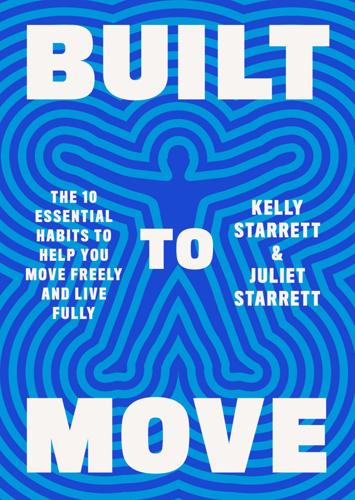
Built to Move: The Ten Essential Habits to Help You Move Freely and Live Fully
by
Kelly Starrett
and
Juliet Starrett
Published 3 Apr 2023
Even the most highly trained athletes in the world go easy on food on game day, eating a slice of orange or having a sip of juice during halftime. (More on this in Coda: Thoughts on Weight Control, Intermittent Fasting, and Snacking, this page.) The 24-Hour Fast is not designed to be a test of willpower but rather a test of whether you’re in possession of metabolic flexibility and whether, psychologically (because we know you can handle it physiologically, even if it feels bad), you can do without food for a day (drinking noncaloric beverages is okay). We’re not necessarily telling you to jump on the intermittent fasting bandwagon (see this page), but there are good reasons to go for blocks of time without eating.
…
But there are a few things to think about. In 2022, researchers reported in The New England Journal of Medicine that intermittent fasting had no benefits (one IF researcher, an IF devotee himself, was crushed by the news). Some research also suggests that IF may cause more muscle loss than other types of weight loss. While muscle forfeiture tends to be a casualty of any type of weight loss, a study led by researchers at the University of California, San Francisco, found that people who followed a 16:8 intermittent fasting diet (eating only within an eight-hour window, abstaining the other sixteen hours) experienced an unusual amount of muscle loss: 65 percent of the weight they took off was lean tissue—more than double what normally occurs.
…
DOI: 10.3390/nu11051136. “Diabetes Statistics.” National Institute of Diabetes and Digestive and Kidney Diseases. www.niddk.nih.gov/health-information/health-statistics/diabetes-statistics. “Diet Review: Intermittent Fasting for Weight Loss.” The Nutrition Source, Harvard School of Public Health. www.hsph.harvard.edu/nutritionsource/healthy-weight/diet-reviews/intermittent-fasting. Drew, Liam. “Fighting the Inevitability of Ageing.” Nature Outlook 555 (March 7, 2018). DOI: 10.1038/d41586-018-02479-z. Easter, Michael. The Comfort Crisis: Embrace Discomfort to Reclaim Your Wild, Happy, Healthy Self.
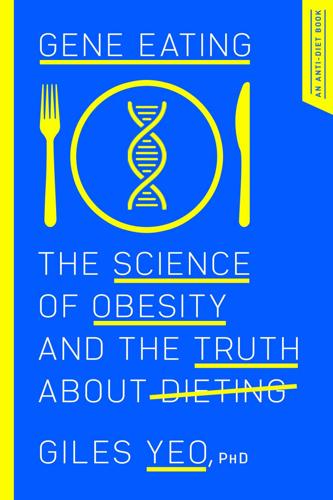
Gene Eating: The Science of Obesity and the Truth About Dieting
by
Giles Yeo
Published 3 Jun 2019
Because all of the Constant Cravers were different, picking a single ‘personalised’ diet for them all was also proving difficult. The strategy was therefore to think about how to best tackle the constant hunger. In the end, the Constant Cravers were placed on an ‘intermittent-fasting’ diet. There are a number of variations of intermittent fasting, with the three most common ones being: a)Whole-day fasting — which is 1–2 days per week of up to 25 per cent of daily caloric requirements, with no food restriction on the other days; b)Alternate-day fasting — where people alternate between days of no restriction with days consisting of one meal providing around 25 per cent of daily caloric requirements and c)Time-restricted feeding — where, for instance, you may eat all of your meals in an 8-hour window (typically, this window can range from 6–10 hours) during the day, and fast the remaining 16 hours.
…
It was a ‘ketogenic diet lite’, clearly nowhere near as extreme as its big brother. There is no doubt that intermittent fasting is suited to some people as a weight-loss strategy. I certainly don’t consider it a ‘fad diet’, because you are not buying or eating anything out of the ordinary, and you are not restricting entire food groups for no reasons. You are just eating a little bit less of everything, but in a timetabled fashion. As long as you don’t overcompensate on the non-fasting days, you will go into calorie deficit, which will lead to weight loss. The BIG question is whether there is any additional benefit to doing it by intermittent fasting, as opposed to reducing calories in a myriad of other ways?
…
For others, however, their temperament may be better suited to implementing a moderate restriction but every day. Of course, lifestyle can also get in the way; so shift-workers who are working seven days on and seven days off for instance, could find intermittent fasting difficult. How about other benefits to metabolic health beyond that obtained from weight loss? This is less clear. There are some who argue that intermittent fasting mimics the food environment that humans would have experienced during much of their hunting and gathering existence prior to agriculture. It is part of the ‘paleo’ argument, that since this is what we were adapted to, a feast and famine environment of periodic food availability, it must be better for us than constant food availability.

Minimalism: Live a Meaningful Life
by
Joshua Fields Millburn
and
Ryan Nicodemus
Published 8 Dec 2011
Also, see our friend Matt Madeiro’s documented progress on the primal plan (including pictures of his progress) at threenewleaves.com/my-primal-progress-with-pictures. Intermittent fasting. Intermittent fasting is a pattern of eating that alternates between periods of fasting (consuming only water) and non-fasting. For example, a person who intermittently fasts might not eat for 16 hours per day and then eat two or three meals within an eight hour window during the day. Thus, any of the four above mentioned dietary lifestyles could apply to intermittent fasting. People who attempt this diet (even for 10 days) typically see wonderful results. As we were editing this book, Joshua started adhering to this diet and saw incredible results in about a week—less body fat, a flatter stomach, and more toned muscles.
…
As we were editing this book, Joshua started adhering to this diet and saw incredible results in about a week—less body fat, a flatter stomach, and more toned muscles. Martin Berkhan has achieved unbelievable results with this diet (including muscle-mass results far beyond the scope of this book). You can read more about intermittent fasting and see Martin Berkhan’s story at leangains.com. Developing Daily Food Habits Most drastic dietary changes fail long-term. That’s because they are overwhelming, so people find them too hard to stick to. Instead of establishing a diet plan, we encourage you to change your diet for 10 days at a time.
…
Over the last few years, we’ve tried several things that have worked for us (and many other things that haven’t), and during this time we determined that the most important measurements of success were not measured in pounds on a scale, but rather by two things: Are we constantly improving our fitness? Are we happy with our progress? That’s how we measure our success. Because, face it, you could lose all the weight you want but still not be happy with your physical fitness. In fact, this happened to Joshua. Through a combination of pescatarianism and intermittent fasting, Joshua lost 70 pounds over a two-year span. On the surface this sounds great, and it certainly was a good thing. But, by age 28, even though he was 70 pounds lighter, he was flabby, doughy, and weak. But over two years, he developed small, simple daily habits that transformed him into the best shape of his life by age 30.

Dopamine Nation: Finding Balance in the Age of Indulgence
by
Anna Lembke
Published 24 Aug 2021
The authors theorized that “low-dose stimulation of DNA damage repair, the removal of aberrant cells via stimulated apoptosis [cell death], and elimination of cancer cells via stimulated anticancer immunity” are at the heart of the beneficial effects of radiation hormesis. Note that these findings are controversial, and a follow-up paper published in the prestigious Lancet disputed them. Intermittent fasting and calorie restriction extended lifespan and increased resistance to age-related diseases in rodents and monkeys, as well as reduced blood pressure and increased heart rate variability. Intermittent fasting has become somewhat popular as a way to lose weight and improve well-being. Fasting algorithms include alternate-day fasting, one-day-per-week fasting, up-to-the-ninth-hour fasting, one-meal-per-day fasting, 16:8 fasting (fasting for sixteen hours each day and doing all your eating within the other eight-hour window), and so on.
…
Fasting algorithms include alternate-day fasting, one-day-per-week fasting, up-to-the-ninth-hour fasting, one-meal-per-day fasting, 16:8 fasting (fasting for sixteen hours each day and doing all your eating within the other eight-hour window), and so on. American celebrity talk show host Jimmy Kimmel practices intermittent fasting. “Something I’ve been doing for a couple of years now is starving myself two days a week. . . . On Monday and Thursday, I eat fewer than five hundred calories a day, then I eat like a pig for the other five days. You ‘surprise’ the body, keep it guessing.” Not long ago, such fasting behaviors might have warranted the label “eating disorder.” Too few calories is harmful for obvious reasons.
…
But it was her getting sober that got me active. I could tell she was headed to a good place, and I didn’t want to be left behind. “So I got a Fitbit. I started going to the gym. I started calorie counting . . . just counting the calories made me realize how much I was eating. Then I started the keto diet and intermittent fasting. I wouldn’t let myself eat late at night, or in the morning until I had worked out. I ran. I weight lifted. I realized hunger is a notification I can ignore. This year [2019] I weigh 195 pounds. I have a normal blood pressure for the first time in a long time.” In my clinical practice, I often see one member of a family get into recovery from addiction, followed quickly by another member of the family doing the same.

The Diet Myth: The Real Science Behind What We Eat
by
Tim Spector
Published 13 May 2015
Although feeling healthier, Karen repeated her varied prebiotic twenty-item diet, but this time after a kick-start by clearing out her colon with laxatives. She lost another five kilograms, and I then suggested longer-term intermittent fasting as a way of changing her microbes and losing weight. After three months, she lost a further five kilos, so she is now ten kilos lighter and, more importantly, she feels a lot better. We don’t know whether the effects of the intermittent fasting would be permanent on her microbiome if she stopped, but we do see major changes in the species during fasting periods when mucus-eating microbes start their cleanup operations.6 Karen’s story, although just one anecdote and far from a trial or proof, illustrates several points.
…
The glycaemic index (GI) diet targets certain types of carbohydrates that via the release of glucose rapidly raise blood insulin, seen as the main enemy, and the South Beach Diet targets both bad carbs and bad fats; some diets (such as the Montignac) forbid certain food combinations, and the recent phenomenon of fasting (such as the 5:2 diet) promotes as the answer intermittent ‘fasting’ via periods of reduced calorie intake. And there are countless alternatives – I was shocked to find well over thirty thousand books available, with their own websites and merchandising, promoting different diet regimes and supplements ranging from the sensible to the dangerous and crazy. I wanted to find a formula that would keep me healthy and reduce the risks or symptoms of the most prevalent modern diseases.
…
For example, differences in our individual gut microbes can explain why a low-fat diet works for some people, while a high-fat diet is fine for some and dangerous for others; why some people can eat plenty of carbohydrates without problems and others extract more calories from the same amount and get fatter; why some eat red meat happily and others contract heart disease; or even why when old people move to care homes and their diets change, they often rapidly succumb to diseases. The increasing promotion and use of restrictive diets that depend on just a few ingredients will inevitably lead to a further reduction in microbe diversity and eventually to ill health. Intermittent fasting (such as the Fast Diet or 5:2) may be the exception, as short-term fasting can stimulate friendly microbes, but this is only as long as the other, ‘free eating’, days contain a diverse diet. Fifteen thousand years ago our ancestors regularly ingested around 150 ingredients in a week. Most people nowadays consume fewer than twenty separate food items and many, if not most, of these are artificially refined.
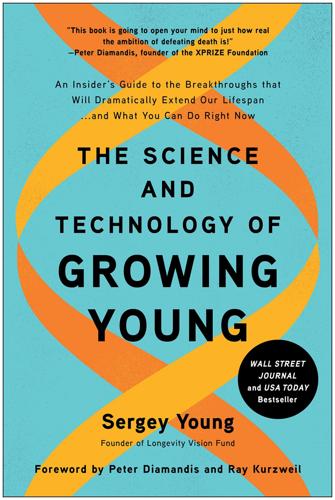
The Science and Technology of Growing Young: An Insider's Guide to the Breakthroughs That Will Dramatically Extend Our Lifespan . . . And What You Can Do Right Now
by
Sergey Young
Published 23 Aug 2021
Kraus et al., “2 years of calorie restriction and cardiometabolic risk (CALERIE): exploratory outcomes of a multicentre, phase 2, randomised controlled trial,” The Lancet Diabetes & Endocrinology 7, no. 9 (2019), https://doi.org/10.1016/S2213-8587(19)30151-2. 18Axel F. Sigurdsson, “Intermittent Fasting and Health – The Scientific Evidence,” Doc’s Opinion, last modified January 12, 2020, https://www.docsopinion.com/intermittent-fasting; Harvard Women’s Health Watch, “Can scheduled fasting improve your health?,” Harvard Health Publishing, last modified May, 2020, https://www.health.harvard.edu/staying-healthy/can-scheduled-fasting-improve-your-health; Monique Tello, “Intermittent fasting: Surprising update,” Harvard Health Publishing, last modified February 10, 2020, https://www.health.harvard.edu/blog/intermittent-fasting-surprising-update-2018062914156. 19James Gallagher, “The diets cutting one in five lives short every year,” BBC News, last modified April 4, 2019, https://www.bbc.com/news/health-47734296; Ashkan Afshin et al., “Health effects of dietary risks in 195 countries, 1990-2017: a systematic analysis for the Global Burden of Disease Study 2017,” The Lancet 393, no. 10184 (2019), https://doi.org/10.1016/S0140-6736(19)30041-8; Heart Essentials, “Looking at the Link Between Salt and Heart Failure,” Cleveland Clinic, last modified October 26, 2017, https://health.clevelandclinic.org/looking-at-the-link-between-salt-and-heart-failure/. 20Anaïs Rico-Campà et al., “Association between consumption of ultra-processed foods and all cause mortality: SUN prospective cohort study,” BMJ 365 (2019), https://doi.org/10.1136/bmj.l1949. 21Bernard Srour et al., “Ultra-processed food intake and risk of cardiovascular disease: prospective cohort study (NutriNet-Santé),” BMJ 365 (2019), https://doi.org/10.1136/bmj.l1451. 22Jonathan Shaw, “A Diabetes Link to Meat,” Harvard Magazine, last modified January-February, 2012, https://www.harvardmagazine.com/2012/01/a-diabetes-link-to-meat. 23Nathan Donley, “The USA lags behind other agricultural nations in banning harmful pesticides,” Environmental Health 18, no. 1 (2019), https://doi.org/10.1186/s12940-019-0488-0. 24Robert A.
…
For those just setting out in the world of calorie restriction, I suggest starting with a 16:8-hour intermittent fasting regimen. This is where you eat all of your meals within one eight-hour period—for instance, between 8 am and 4 pm, or between 10 am and 6 pm. You then simply refrain from eating again until the next morning. As you become more comfortable with time-restricted eating, you can consider bumping up to an 18:6 model, where you eat all of your calories between noon and 6 pm, for instance. Clinical data show that intermittent fasting improves weight loss, insulin stability, cholesterol levels, and blood pressure, as well as energy and mental alertness, and it can also add years to your life.18 Personally, in addition to intermittent fasting, I do a complete fast for thirty-six hours, every week.
…
Clinical data show that intermittent fasting improves weight loss, insulin stability, cholesterol levels, and blood pressure, as well as energy and mental alertness, and it can also add years to your life.18 Personally, in addition to intermittent fasting, I do a complete fast for thirty-six hours, every week. I have an early dinner on Monday, I fast the entire day on Tuesday, allowing myself to have only water and herbal tea, and then I finally eat my next meal on Wednesday morning. It may surprise you to know that this is really not hard to do, and I rarely feel hungry. I also recommend eating more of your calories early in the day, which aids weight loss, reduces blood sugar, insulin, and triglycerides, and causes you to burn twice the calories of those who eat large dinners. 5.

5:2 Diet With Fast Metabolism How To Fix Your Damaged Metabolism, Increase Your Metabolic Rate, And Increase The Effectiveness Of 5:2 Diet + Dry Fasting : Guide to Miracle of Fasting (2 in 1 Bundle)
by
Greenleatherr
Published 7 Jun 2019
This explains why many people who eat only lettuce and greens still manage to put on weight, or at best, never lose any weight despite their discipline and hard work. Because their metabolism needs repair, their body simply processes food differently. The same goes for people who go on fasts, including those who follow the very popular method called “intermittent fasting” or IF. That method can work for some healthy people with good metabolic function, but it’s just not for everyone. It can bring especially disastrous results for people with a slow metabolism. Fasting puts the body into starvation mode, which encourages the buildup of fats. To make matters worse, when the person finally breaks his fast, he tends to overeat because his body is panicking about food.
…
These food restrictions may require some adjusting to, especially if you’re a coffee lover or if you’re used to sweet and sugary foods. But given time, you’ll get used to not having these foods in your diet, and your body will thank you for it. Chapter 6: What is the 5:2 Diet? The 5:2 diet is a form of intermittent fasting diet that lets dieters eat what they want for 5 days and then fast for 2 days. This diet has no food restrictions provided that dieters consume their normal calorie intake during the five “free days” and only 25% of their normal calorie intake during the two days of fasting. The calories consumption is 600 kcal for men and 500 kcal for women during the fast day.
…
When you go on a 16/8 intermittent dry fast, you abstain from eating and drinking for 16 hours. You are allowed to eat and drink during the 8-hour window. When you go on a 20/4 intermittent dry fast, you abstain from food and drink for 20 hours. You are allowed to take food and drink during the 4-hour window. The RIF or Ramadan Intermittent Fasting that the Muslims practice during Ramadan takes off from this form of fast. Muslims take one meal before sunrise, abstain from food and drink during the hours before sunset (18-20 hours), and take diner before retiring for the night. •Prolonged dry fasting Prolonged dry fasting is going without eating and drinking for longer than 24 hours.

The One-Minute Workout
by
Martin Gibala
Published 5 Jan 2017
Another protocol, pioneered by Britain’s Michael Mosley in his 2013 book The Fast Diet, suggests eating normally for five days and then radically restricting calorie intake the next two, to 500 calories a day for women and 600 for men. As for Phillips, he suggests a much easier form, which sees eating reasonably for six days and then fasting one day of the week. “Even if you do it only now and again,” Phillips says, “intermittent fasting would have a marked effect on your ability to regulate blood glucose, lipids, and other biomarkers of health.” That’s because intermittent fasting appears to provide some of the same benefits of calorie restriction—with much less discomfort involved. For example Alex Johnstone examined what happened to twenty-four male and female participants who fasted for thirty-six hours, from 8 p.m. one night through the whole of the following day until an 8 a.m. breakfast the morning of the third day.
…
Fast Intermittently We’re mentioning this technique because we’re trying to help you go from out-of-shape and chubby to fit and lean in the most efficient manner possible. You don’t have much time. You want your changes to happen now. If that’s the case, then you’ll be interested in one of the most fascinating approaches to weight loss to hit the academic literature in years: intermittent fasting. Starving yourself. Not eating at all for a certain amount of time at regular intervals. Voluntarily. Humans have fasted for all sorts of reasons through the ages. There’s the Jewish practice of fasting on Yom Kippur and the Muslim practice of refraining from eating during daylight hours during the month of Ramadan.
…
(The minimum range for normal-weight individuals who stand six feet tall is 140 to 180—for a BMI of 19 to 24.) And yet, members of the movement insist that their blood markers are the picture of health. Neither I nor Stu Phillips is suggesting long-term calorie restriction. Rather we’re suggesting that people seeking strategies to help them lose weight quickly consider intermittent fasting. Several different approaches exist. One version prescribes fasting one day, then eating normally, as one’s appetite dictates, the next. A slightly different version has you eating normally one day and then restricting caloric intake to 25 to 50 percent of normal the next. Another protocol, pioneered by Britain’s Michael Mosley in his 2013 book The Fast Diet, suggests eating normally for five days and then radically restricting calorie intake the next two, to 500 calories a day for women and 600 for men.
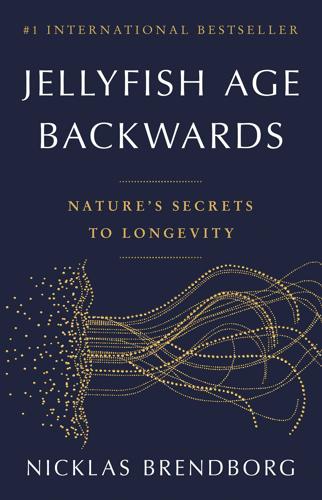
Jellyfish Age Backwards: Nature's Secrets to Longevity
by
Nicklas Brendborg
Published 17 Jan 2023
I can imagine using a similar strategy during the holidays which is, in fact, the time period where people tend to put on most weight. Beyond time-restricted eating, most other fasting methods involve undertaking all-day fasts for one or more days. This type of fasting is known as intermittent fasting, and is the kind of fasting we particularly see in religious texts. The scientific history of intermittent fasting originated in the 1940s with the researchers Anton Carlson and Frederick Hoelzel of the University of Chicago. The two were something of an odd couple. Carlson was an eminent Swedish-American physiologist with a PhD from Stanford University who chaired the Department of Physiology at the University of Chicago for twenty-four years.
…
Some people don’t fast entirely, but eat a small amount of food, for example 500–600 calories, to keep hunger at bay. A slightly gentler alternative is the 5:2 diet, which is also popular. The principles are like those of alternate-day fasting, but you only fast for two days a week. We’re still collecting evidence of the effects of intermittent fasting in humans. One caveat when translating the mouse studies to humans is that a whole day of fasting is a lot longer for a mouse than a person. A mouse lives a few years at best, while humans live for decades. So some scientists think we will have to undertake longer fasts to get the same benefits as the laboratory mice.
…
‘mTOR Signaling in Growth, Metabolism, and Disease’, Cell, vol. 168, no. 6, 2017, pp. 960–976. Chapter 19: An Old Custom in New Clothes Di Francesco, A., Di Germanio, C., Bernier, M., De Cabo, R. ‘A time to fast’, Science, vol. 362, no. 6416, 2018, pp. 770–775. Michael Anson, R. et al. ‘Intermittent fasting dissociates beneficial effects of dietary restriction on glucose metabolism and neuronal resistance to injury from calorie intake’, Proceedings of the National Academy of Sciences of the United States of America, vol. 100, no. 10, 2003, pp. 6216–6220. Mitchell, S. et al. ‘Daily Fasting Improves Health and Survival in Male Mice Independent of Diet Composition and Calories’, Cell Metabolism, vol. 29, no. 1, 2019, pp. 221–228.
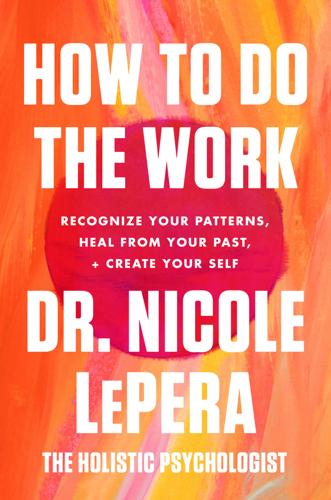
How to Do the Work: Recognize Your Patterns, Heal From Your Past, and Create Your Self
by
Nicole Lepera
Published 9 Mar 2021
In addition to consuming nutrient-dense foods that make you feel your best, adding fermented foods, such as sauerkraut, yogurt, kefir, and kimchi, to your diet can also be helpful, as they are rich in naturally occurring probiotics. Another popular nutritional approach that has gained widespread appeal and is supported by various academic studies is intermittent fasting.52 Planned fasts, or intervals of not eating, give our digestive system a break within healthy bounds, which challenge our body in beneficial ways and improves our vagal tone. This could involve full-day fasts, ten-hour windows of eating, or just snacking less frequently during the day. Fasting gives our digestive system a rest, freeing up the energy that would be devoted to digestion for use elsewhere.
…
It can also help to increase our insulin sensitivity and regulate our blood sugar, keeping us from becoming a “sugar burner” who is always hungry and looking for the next sugar fix. Until I changed my nutrition, I was a notorious sugar burner; my girlfriends always knew to pack snacks for any outing or else the day would end poorly for both of us. I ran on hit after hit of sugar and was constantly ravenous. Studies have shown that intermittent fasting increases mental acuity, learning, and alertness53 (but I will warn you, other studies have also shown increases in irritability,54 especially in the beginning, before your body gets used to it). When we fast and change our nutrition, our body learns how to get energy from alternate forms of fuel, such as fat and protein.
…
This nutrient depletion continues to send hunger signals to our brain, causing us to feel the need to snack often and, for some of us, to engage in overeating or bingelike behaviors. We eat and eat yet never feel satisfied, because nutritionally our body is not getting what it needs. Of course, intermittent fasting may not be appropriate for everyone, especially those with a past history of eating disorders. Anyone with a history of restricted eating patterns should not engage with this practice. HEALING SLEEP When we start paying attention to how our nutrition influences our body and mind, other opportunities emerge to learn how our daily choices may not be serving our body’s essential needs.
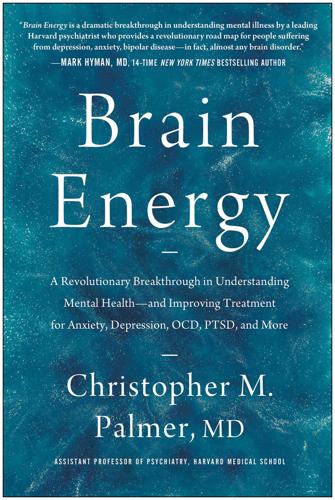
Brain Energy: A Revolutionary Breakthrough in Understanding Mental Health--And Improving Treatment for Anxiety, Depression, OCD, PTSD, and More
by
Christopher M. Palmer Md
Published 15 Nov 2022
For example, some people have an autoimmune disorder called celiac disease that results in inflammation and other metabolic problems in response to gluten. This can also affect brain function. I’ve described the toxic effects of TFAs. There are many other dietary ingredients that can also impair mitochondrial function. 3.Eating a “healthy diet,” such as the Mediterranean diet, may play a role for some people. 4.Exploring fasting, intermittent fasting (IF), and fasting-mimicking diets (more below on all three) that stimulate autophagy and mitophagy to improve metabolic health. 5.Improving the gut microbiome (more on how below). 6.Improving metabolism and mitochondrial function with a dietary intervention. This includes changes in insulin resistance, metabolic rate, the number of mitochondria in cells, the overall health of mitochondria, hormones, inflammation, and many other known regulators of metabolism. 7.Dietary changes that result in losing weight can help to mitigate the problems associated with obesity. 8.Dietary changes that result in gaining weight can be a life-saving intervention for those who are severely underweight.
…
The mitochondria in the MD-fed animals maintained normal differences between brain regions, whereas the mitochondria in the Western-fed animals lost these normal distinctions. The brain areas affected are known to play a role in diabetes and Alzheimer’s disease. There is also evidence that fasting, intermittent fasting (IF), and fasting-mimicking diets may play a role in treating mental disorders. They all result in the production of ketone bodies, which are made when fat is being used as an energy source. Fat gets turned into ketones. And, interestingly, this process occurs exclusively in mitochondria, yet another role for these magnificent organelles.
…
Am J Physiol Endocrinol Metab 321(5) (2021): E652–E664. doi: 10.1152/ajpendo.00165.2021. 32Y. Liu, A. Cheng, Y. J. Li, Y. Yang, Y. Kishimoto, S. Zhang, Y. Wang, R. Wan, S. M. Raefsky, D. Lu, T. Saito, T. Saido, J. Zhu, L. J. Wu, and M. P. Mattson. “SIRT3 Mediates Hippocampal Synaptic Adaptations to Intermittent Fasting and Ameliorates Deficits in APP Mutant Mice.” Nat Commun 10(1) (2019): 1886. doi: 10.1038/s41467-019-09897-1. 33M. Mattson, K. Moehl, N. Ghena, et al. “Intermittent Metabolic Switching, Neuroplasticity and Brain Health.” Nat Rev Neurosci 19(2) (2018): 81–94. doi: 10.1038/nrn.2017.156. 34K.

Lifespan: Why We Age—and Why We Don't Have To
by
David A. Sinclair
and
Matthew D. Laplante
Published 9 Sep 2019
Even if the cell is able to repair the breaks in the short term without leaving mutations, there is information loss at the epigenetic level. Here’s the important point: there are plenty of stressors that will activate longevity genes without damaging the cell, including certain types of exercise, intermittent fasting, low-protein diets, and exposure to hot and cold temperatures (I discuss this in chapter 4). That’s called hormesis.28 Hormesis is generally good for organisms, especially when it can be induced without causing any lasting damage. When hormesis happens, all is well. And, in fact, all is better than well, because the little bit of stress that occurs when the genes are activated prompts the rest of the system to hunker down, to conserve, to survive a little longer.
…
Drugs in development and at least two drugs on the market can turn on the body’s defenses without creating any damage. It’s like making a prank call to the Pentagon. The troops and the Army Corps of Engineers are sent out, but there’s no war. In this way, we can mimic the benefits of exercise and intermittent fasting with a single pill (I discuss this in chapter 5). Our ability to control all of these genetic pathways will fundamentally transform medicine and the shape of our everyday lives. Indeed, it will change the way we define our species. And yes, I realize how that sounds. So let me explain why.
…
But it turns out that’s okay, because research is increasingly demonstrating that many of the benefits of a life of strict and uncompromising calorie restriction can be obtained in another way. In fact, that way might be even better. THE PERIODIC TABLE To ensure a genetic response to a lack of food, hunger doesn’t need to be the status quo. Once we’ve grown accustomed to stress, after all, it’s no longer as stressful. Intermittent fasting, or IF—eating normal portions of food but with periodic episodes without meals—is often portrayed as a new innovation in health. But long before my friend Valter Longo at the University of California, Los Angeles, began touting the benefits of IF, scientists had been studying the effects of periodic calorie restriction for the better part of a century.

Grain Brain: The Surprising Truth About Wheat, Carbs, and Sugar--Your Brain's Silent Killers
by
David Perlmutter
and
Kristin Loberg
Published 17 Sep 2013
Remember, too, that increasing BDNF provides the added benefit of actually reducing appetite. I call that a double bonus. But if the figures above still aren’t enough to motivate you toward a diet destined to help your brain, in many respects, the same pathway that turns on BDNF production can be activated by intermittent fasting. We’ll fully explore fasting in chapter 7. The beneficial effects in treating neurologic conditions using caloric restriction actually aren’t news for modern science, though; they have been recognized since antiquity. Calorie restriction was the first effective treatment in medical history for epileptic seizures.
…
THE POWER OF FASTING One critical mechanism of the human body that I’ve already covered is its ability to convert fat into vital fuel during times of starvation. We can break down fat into specialized molecules called ketones, and one in particular that I’ve already mentioned—beta-hydroxybutyrate (beta-HBA)—is a superior fuel for the brain. This not only provides a compelling case for the benefits of intermittent fasting to, as contradictory as this may seem, nourish the brain, but also serves as an explanation for one of the most hotly debated questions in anthropology: why our Neanderthal relatives disappeared between thirty and forty thousand years ago. While it’s convenient and almost dogmatic to accept that Neanderthals were “wiped out” by clever Homo sapiens, many scientists now believe that food scarcity may have played a more prominent role in their disappearance.
…
In chapter 5 we explored the need to reduce caloric intake in order to increase BDNF as a means of stimulating the growth of new brain cells as well as enhancing the function of existing neurons. The idea of substantially reducing your daily calorie intake does not appeal to many people, even though it’s a powerful approach to not only brain enhancement, but also overall health. But intermittent fasting—a complete restriction of food for twenty-four to seventy-two hours at regular intervals throughout the year—is more manageable, and I recommend and outline a fasting protocol in chapter 10. Research has demonstrated that many of the same health-providing and brain-enhancing genetic pathways activated by caloric restriction are similarly engaged by fasting, even for relatively short periods of time.3 This is counter to conventional wisdom that says fasting lowers the metabolism and forces the body to hold on to fat in a so-called starvation mode.
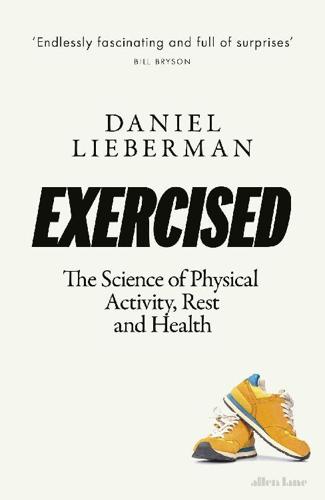
Exercised: The Science of Physical Activity, Rest and Health
by
Daniel Lieberman
Published 2 Sep 2020
C., et al. (2009), Glucose ingestion during endurance training in men attenuates expression of myokine receptor, Experimental Physiology 94:1124–31. 53 For a popular review of the current state of both charlatans and serious scientists trying to extend life, see Gifford, W. (2014), Spring Chicken: Stay Young Forever (or Die Trying) (New York: Grand Central Publishing). 54 For a review of intermittent fasting, see De Cabo, R., and Mattson, M. P. (2019), Effects of intermittent fasting on health, aging, and disease, New En gland Journal of Medicine 381:2541–51. Note that intermittent fasting, which is short-term calorie restriction, is not the same thing as long-term calorie restriction. Although the stress induced by long-term calorie restriction does lengthen the life span of laboratory mice, there is no good evidence it helps humans or other primates.
…
This kind of “no pain, no gain” philosophy has inspired a dizzying array of self-inflicted hardships thought to ward off aging (an added benefit is their aura of virtue). Hoping to live longer, people take cold showers, restrict their caloric intake, endure long periods without eating, shun carbohydrates, burn their digestive tracts with spicy food, and more.53 Some of these strategies are downright questionable, and, with the exception of intermittent fasting, none is yet supported by solid evidence as a way to extend human longevity.54 Why is regular physical activity the best way to delay senescence and extend life? Recall that according to the costly repair hypothesis, organisms with restricted energy supplies (just about everyone until recently) must allocate limited calories toward either reproducing, moving, or taking care of their bodies, but natural selection ultimately cares only about reproduction.
…
Air Force, 292 Africa: ancestral hunter-gatherers from, 14–18 carrying loads on head in, 183–5, 184 du Chaillu research in Gabon, 127–8, 130 stereotype about pain experienced by people from, 13, 344n7 African Genesis (Ardrey), 149–50 afterburn, 192, 239–41, 240, 384n48 aggression: domestication and self-domestication and, 153–4 evolution to low reactive and high proactive aggression, 147–51 violence and natural aggression, 142–7 aging: activity level as we age, xv, xviii advice on living longer, 225–6, 250, 338–9 alternatives to exercise that slow process of, 241–3, 395–6nn53–54 anti-aging mechanisms, 237 chronic musculoskeletal conditions, 320–4, 411n74 exercise myth about slowing aging, xv extrinsic mortality, 237 immune system function and, 236–7, 316 inflammation role in, 60 intergenerational sharing and physical activity of elderly, 230–4, 250–1 longevity and mTOR, 394n35 natural selection and shadow of natural selection, 229, 234, 237, 394n39 physical activity and living longer, 244–51, 246, 248, 281–5, 282, 284, 338–9 physical activity and slowing of, 20, 225–8, 238–44 population older than a hundred, 393n26 post-reproductive life, 229–34, 392nn16–17 resistance training benefits, 136–8 senescence, 234–8, 393n31, 394nn35–36, 394n39 strength, muscle loss, and, 135–8, 137, 139 Air Force Aerospace Medical Laboratory, U.S., 292 Ajax, 164–5 Åkerblom, Bengt, 70, 355n64 alcohol and sleep, 92–3 allergies, 316, 329 Alzheimer’s disease: ApoE4 gene role in, 329, 413–14nn107–108 astrocyte function and, 329, 330, 413n107 evolutionary mismatch of, 328–9 exercise recommendation, 331 genetic factors related to, 250 inflammation role in, 60, 329, 330–1 physical activity and risk for, 24, 300, 330–1 physical activity effects on, 228, 330–1 prevalence of, 328–9 symptoms and progression of, 328, 329 treatment of, 330 American College of Sports Medicine, 138 anaerobic exercise and fitness, 118, 295 animals: age of death and end of reproductive life, 229 bipedalism and speed of, 103–5, 104, 364n12 breeding for lower aggression, 153–4, 376n36 distance running by, 205 evaporative cooling and panting, 206–8 fighting by, 155 head stabilization while running, 202, 209, 387n23 speed of, 98–9, 101–5, 104, 362–3n2, 363n7, 363n9 stride length, stride rate, and speed of, 206, 207 walking, age for starting, 380n7 walking by, 176–82, 178, 381n18 antagonistic pleiotropy, 394n39 antioxidants, 242, 327–8 anxiety: about not sleeping, 73 evolutionary mismatch of, 331–3 forms and symptoms of, 332 medication to treat, 334, 416n130 nationalism as source of, 22–3 physical activity as source of, xiii, xiv, 22–3, 277 physical activity effects on, 333–5, 415–16nn129–130 rates and prevalence of, 332–3 serotonin levels and, 268–9 “Anything is Possible” motto, 5, 12 apes: aggression of and fighting by, 154, 155 aquatic ape hypothesis (AAH), 385n54 evolution and activity levels, 29, 44 inactivity of, 28, 44, 58 killer-ape hypothesis, 149–50 PAL (physical activity level) of, 44 sleep duration and patterns of, 83–4 standing efficiency compared to humans, 52–3, 52, 349n8 strength of, 127–9, 370n27 walking by, 177, 181–2, 381n14, 381n18 See also chimpanzees; gorillas ApoE4 (Apolipoprotein E4) gene, 329, 413–14nn107–108 aquatic ape hypothesis (AAH), 385n54 Ardrey, Robert, 149–50 ariwete footrace, 7, 213 Arizona, xiv arrhythmias and atrial fibrillation, 288, 290, 310, 403n23 arthritis: inflammation role in, 60 osteoarthritis, 216, 300, 320–2, 323, 324 running and, xvi, 216, 323 astrocyte function, 329, 330, 413n107 astronauts, 292 atherosclerosis, 309–10 athletic savage, myth of, 10–14 Atlas, Charles, 120–2, 126, 134 atrial fibrillation, 288, 290, 310, 403n23 Austen, Jane, 37–9, 223 autoimmune diseases, 316, 329 baboons, 140–1, 143, 144, 151 back pain, posture, and sitting, 70, 355n64, 355–6n67 Baggish, Aaron, 13, 208–9, 284, 286–7, 310–11, 314 barefoot running, 6, 122–3, 199, 213–15, 219–20, 390n50 barefoot walking, 172, 174, 179, 279 basal metabolic rate (BMR), 31, 32–3, 35–7, 347nn10–11, 347n16, 384nn46–47 Batman, 138, 373n58 battery-powered car analogy, 106 Bauman, John, 128–9 BDNF (brain-derived neurotrophic factor), 330, 334, 335 beta-endorphin, 399n22 Björn Borg sportswear company, 257–60, 258, 271, 397n3 blood-brain barrier, 79, 357n15 blood pressure: cardio exercise benefits, 293, 313, 314 HIIT effect on, 119, 295 hypertension, 300, 310–11, 312, 313 medication to lower, 226, 249 metabolic syndrome, 305, 405n15 physical activity effects on, 312, 314 Valsalva maneuver, 133 weight lifting benefits, 314 blood sugar: cardiovascular problems related to, 227 exercise and levels of, 67 HIIT effect on, 295 inflammation effects on, 62 medication to lower, 249 metabolic syndrome, 305–7, 405n15 See also diabetes, type 2 BMI (body mass index), 301, 404n4 Bolt, Usain, 99–103, 101, 105–6, 113, 363n5 bones: bone robustness, muscles, and strength, 131, 370–1nn31–32 chronic musculoskeletal conditions, 320–4 osteoporosis, 137, 139, 300 resistance training benefits, 137, 297 weight-bearing aerobic exercise benefits for, 293–4, 323–4 bonobos, 129, 131, 154 Borg, Björn, 257, 397n3 Born to Run (McDougall), 6, 8, 343–4n1 Boston Marathon, 224, 265–6 Boule, Marcellin, 130–1, 130 bow and arrow, 161–2, 211 boxing, 143–5, 147, 155 brain: HIIT effect on, 295 inflammation and damage to, 60 mood-altering effects of exercise, 222, 223–4, 267–9, 399n22 natural selection and size of, 44, 45 resting metabolism use of, 36–7 sleep, cognitive functions, and, 75–9, 357n9, 357nn11–15 brain-derived neurotrophic factor (BDNF), 330, 334, 335 Bramble, Dennis, 201–2, 206, 214, 385n3 Browning, Robert, 199 Brownlow, Gheral, 200 bulls, 98–9, 102, 362–3n2 Bunge, Henrik, 257–60, 258, 271 Burfoot, Ambrose “Amy,” 288–90, 403n24 caffeine, 79, 357n14 Calcio Storico Fiorentino, 162–4, 163 calories: intermittent fasting, 243, 395–6n54 kilocalories, 30, 346n5–6 PAL metric and calorie needs, 18–20 RMR and expenditure of, 30–1, 32 starvation effects on human metabolism, 33–7, 40–1, 347n14, 347n16 trade-offs and spending only once, 37–41, 40 cancer: deaths from, 324, 325, 326 evolutionary mismatch of, 325–6 exercise recommendation, 328 inflammation role in, 60 medical care advances treatment of, 249 physical activity reducing risk for, xviii–xix, 24, 272, 300, 353n47 physical activity effects on, 326–8 prevention of, 324 rates of, increase in, 325–6 sitting and risk for, 353n47 sleep deprivation and, 92 treatment of, 324 carbon dioxide (CO2), 30, 31, 32, 346n5, 346–7n9 Cardinal, Bradley, 275 cardio exercise: benefits of, 293–4, 304, 307, 313–14, 320, 328, 331, 335–6 circuit training, 404n39 conflicting advice about, xvi high-intensity aerobic exercise, 294–6 maximum heart rate and, 292, 351n27, 404n34 moderate-intensity aerobic exercise, 193–4, 199, 283–4, 292–4, 328 vigorous aerobic exercise, 193–4, 199, 284, 293, 328 weight-bearing aerobic exercise, 293–4, 323–4 cardiovascular system and disease: cardiovascular disease, 308–14 evolutionary mismatch of, 309–11 exercise recommendation, 313–14 HIIT effect on, 295 physical activity and cardiovascular function, 238–9, 311–13 physical activity and risk of dying, 66 Carrier, David, 155, 156, 200, 201, 211, 385n3 Castillo, Eric, 54, 185 cavemen, 129–32, 130, 370–1nn30–32.
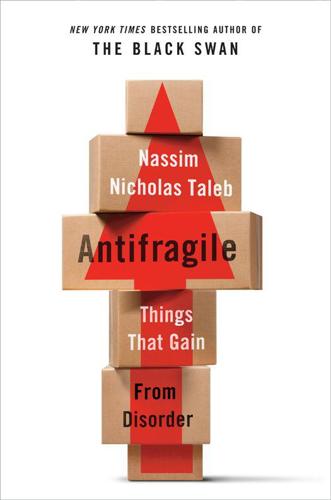
Antifragile: Things That Gain From Disorder
by
Nassim Nicholas Taleb
Published 27 Nov 2012
Marglin, Decolonizing Knowledge: From Development to Dialogue. Oxford University Press, 185–248. Martin, B., M. P. Mattson, et al., 2006, “Caloric Restriction and Intermittent Fasting: Two Potential Diets for Successful Brain Aging.” Ageing Research Reviews 5(3): 332–353. Masoro, E. J., 1998, “Hormesis and the Antiaging Action of Dietary Restriction.” Experimental Gerontology 33(1–2): 61–66. Mattson, M. P., 2008, “Hormesis Defined.” Ageing Research Reviews 7(1): 1–7. Mattson, M. P., and R. Wan, 2005, “Beneficial Effects of Intermittent Fasting and Caloric Restriction on the Cardiovascular and Cerebrovascular Systems.” Journal of Nutritional Biochemistry 16(3): 129–137.
…
The loss at the average intake (six per day keeps the variation of the average small) is less than the loss at the same intake but one that varies between a small intake and a large one. A more subtle point: you lose more weight when you eat at the average than intermittently, but that is because you lose more muscle in chronic deprivation than intermittent deprivation. Intermittent eating yields a superior body composition.” Starvation, intermittent fasting, and aging: For the neuronal resistance and brain aging, Anson, Guo, et al. (2003), Mattson et al. (2005), Martin, Mattson et al. (2006), Halagappa, Guo, et al. (2007), Stranahan and Mattson (2012). Caloric restriction: Harrison (1984), Wiendruch (1996), Pischon (2008). Intense exercise: Synthesis of the literature on the effect of episodic energy imbalance, in De Vany (2011), who also, as a bonus, examines powerlaw effects.
…
Administrative Science Quarterly 209–237. Andreoli, A., M. Monteleone, M. Van Loan, L. Promenzio, U. Tarantino, and A. De Lorenzo, 2001, “Effects of Different Sports on Bone Density and Muscle Mass in Highly Trained Athletes.” Medicine & Science in Sports & Exercise 33(4): 507–511. Anson, R. M., Z. Guo, et al., 2003, “Intermittent Fasting Dissociates Beneficial Effects of Dietary Restriction on Glucose Metabolism and Neuronal Resistance to Injury from Calorie Intake.” Proceedings of the National Academy of Sciences of the United States of America 100(10): 6216. Arbesman, S., 2011, “The Life-Spans of Empires.” Historical Methods: A Journal of Quantitative and Interdisciplinary History 44(3): 127–129.
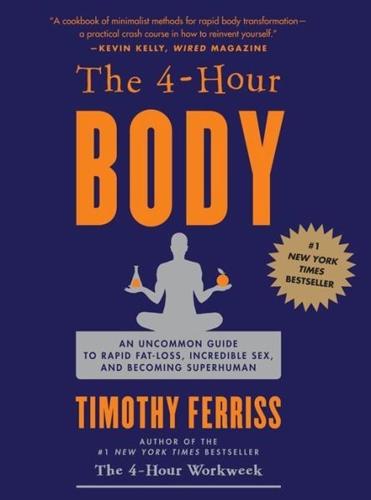
The 4-Hour Body: An Uncommon Guide to Rapid Fat-Loss, Incredible Sex, and Becoming Superhuman
by
Timothy Ferriss
Published 1 Dec 2010
Complications are rare, but an ounce of prevention is worth a pound of cure. Nowhere is this truer than in life- extension. 2. INTERMITTENT FASTING (IF) AND PROTEIN CYCLING (COST: FREE) What if poor, hungry Canto only needed to fast on occasion to extend his life? Constant caloric deprivation isn’t without risks, after all. The decline in sex hormone production alone can cause amenorrhea (cessation of menstruation) and bone thinning, among other problems. It turns out that you can mimic, even exceed, the supposed life- extending effects of caloric restriction with intermittent fasting (IF). This can be true even if you consume twice as many calories as normal during your “on” times, resulting in no total decrease in weekly calories.
…
There is just one more prerequisite for visible abs: follow a diet that allows sustained low bodyfat of 12% or less. I suggest the Slow-Carb Diet, as it has the highest compliance rate I’ve ever observed, but other viable options include a ketogenic diet (especially the Cyclical Ketogenic Diet) and intermittent fasting (IF). The latter will be covered in later chapters. Drew Baye after more than six months of no direct abdominal exercises. It goes to show how diet is often a determining factor. (Photo: Mike Moran) Movement #1: The Myotatic Crunch I began my analysis by looking for common attributes in exercises that hadn’t worked.
…
Herbert, Frank Hiei monk/athletes Hill, James hip extension Hippocrates HIT (high-intensity intermittent) exercise Hite, Shere Hoehn, Charlie holding your breath homeopathy Horton, Zar hot sauce Houdini, Harry HRM (heart rate monitor) human chorionic gonadotropin (hCG) Human Microbiome Project humidifier, 23.1, 23.2 hummus recipe Hungarian Core Blaster (HCB) Hutchins, Ken Hyde, Andrew hypertrophy hyperzine-A hypothalamus, 21.1, 33.1 I IAS (Insulin Autoimmune Syndrome) ice baths ice packs IF (intermittent fasting) IGF-1 (insulin-like growth factor 1) II (insulinemic index) imbalance, 27.1, 27.2 inaction, excuses for infertility injuries, reversing active-release technique AMIT biopuncture cocktail Egoscue method menu prolotherapy, 25.1, 25.2 shoe heel removal injury-proofing chop and lift cross-body one-arm single-leg deadlift fixing Functional Movement Screen (FMS), 27.1, 27.2 schedule sets and reps single-leg flexibility assessment testing Turkish get-up two-arm single-leg deadlift insomnia onset, 23.1, 23.2 insulinemic response insulin-like growth factor 1 (IGF-1) insulin release insulin sensitivity inulin in vitro fertilization iron excess Iron Penis Kung-Fu Irwin, Nic isoleucine IVF (in vitro fertilization) J James, William Japan, life expectancy in Japanese natto, 9.1, 46.1 Jarmey, Chris, The Concise Book of Muscles JayC (eating more) Jeff (variety) Jell-O, sugar-free Jeter, Derek Johnson, Ben, 29.1, 32.1 Johnson, Michael Jones, Arthur, 2.1, 2.2, 16.1, 16.2, 16.3, 16.4, 16.5 Jones, Brett Jones, Marion Jones, Reese Julee (bodyfat) jumping, 28.1, 33.1n Jurek, Scott, 30.1, 31.1, 31.2, 47.1, 47.2, 48.1 K Kaku, Michio Kamen, Dean Karlan, Dean Karnazes, Dean, 16.1, 31.1 Karwoski, Kirk, 33.1, 33.2, 33.3 Kauai Marathon Kay, Alan kefir Keith, Lierre Kelley, Johnny Kenya, marathoners of Kersschot, Jan ketogenic dieting kettlebells, 14.1, 14.2 for biceps certification, 30.1, 32.1 Fleur’s regimen Russian kettlebell swing Turkish get-up Zar Horton’s method Kimball, Charlie kimchi King, Martin Luther, Jr.

Ageless: The New Science of Getting Older Without Getting Old
by
Andrew Steele
Published 24 Dec 2020
DOI: 10.1093/gerona/60.6.688 ageless.link/vw6q4r … a few participants … stop due to anaemia … Eric Ravussin et al., ‘A 2-year randomized controlled trial of human caloric restriction: Feasibility and effects on predictors of health span and longevity’, J. Gerontol. A Biol. Sci. Med. Sci. 70, 1097–104 (2015). DOI: 10.1093/gerona/glv057 ageless.link/ci3m6v When you eat as well as what you eat … This is a provocative review advocating the benefits of intermittent fasting, and suggesting how to go about it if you want to try: Rafael de Cabo and Mark P. Mattson, ‘Effects of intermittent fasting on health, aging, and disease’, N. Engl. J. Med. 381, 2541–51 (2019). DOI: 10.1056/NEJMra1905136 ageless.link/3pgwep 3. Get some exercise Exercise is good for your health … To illustrate how sure we are that exercise is good for you, this paper isn’t just a systematic review – where researchers try to pull together every study that’s ever been done on a topic and assess them all together − but a systematic review of systematic reviews that shows this: Darren E.
…
DR mice might live longer in a clean, calm lab environment, kept meticulously free from infection – but as a human who wants to get out and about and actually do stuff, it’s no use being at slightly lower risk of age-related disease if you end up frequently breaking your leg, or dying young of influenza. When you eat as well as what you eat can have an effect. ‘Intermittent fasting’, recently popularised as the ‘5:2 diet’, involves eating far less, or perhaps nothing at all, for a day in every few. The 5:2 diet, for example, suggests cutting back to 600 calories on two non-consecutive days in a week, and eating normally on the other five. ‘Alternate-day fasting’ goes a little further and requires low or zero eating every other day.
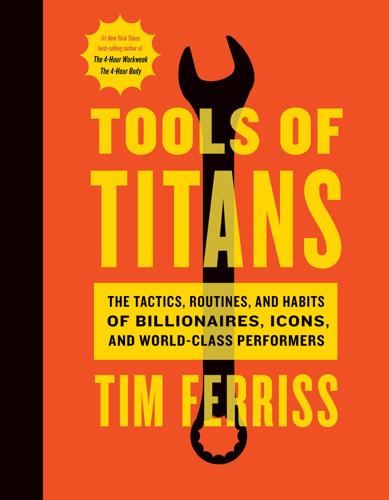
Tools of Titans: The Tactics, Routines, and Habits of Billionaires, Icons, and World-Class Performers
by
Timothy Ferriss
Published 6 Dec 2016
This means that there is a synergy in using them together. The whole is greater than the sum of its parts. 1 + 1 + 1 + 1 + 1 = 10, let’s say, not 5. I’ve starred those on the following list that I’ve experimented with myself. *Ketogenic diet as base therapy. This is the foundation. *Intermittent fasting: 1 meal per day within a daily 4-hour window *Ketone supplementation 2 to 4 times per day: His objective would be to elevate his BHB levels 1 to 2 mmol above his baseline, achieved by the aforementioned two. In other words, if he were running at ~1.5 mmol using a 1-meal-per-day modified Atkins diet, he would take enough supplemental ketones to consistently achieve 2.5 to 3.5 mmol.
…
When I asked him about his typical dinners, his answer made me laugh: “I like pasta, and I like a couple of beers, too. Yeah!” How can he function on this food? Genetics might play a role, but he also rarely eats before 6 p.m. and tends to eat one single meal per day. To use the lingo of the cool kids: He has practiced intermittent fasting for decades now. Heart-to-Heart Hugs When I first trained with Wim in person in Malibu, California, I noticed he hugged differently than most people. He throws his left arm over the person’s shoulder, putting his head to the right of theirs. I asked someone on his team if he was left-handed.
…
Steven Rosenberg, where Peter focused on the role of regulatory T cells in cancer regression and other immune-based therapies for cancer. Peter’s Breakfast “It usually starts with nothing, and then I usually do a second course—because I’m a little hungry—and I’ll have a little bit more nothing. I usually top it off with a bit of nothing.” Peter rarely eats breakfast and has experimented with many forms of intermittent fasting, ranging from one meal a day (i.e., 23 hours of fasting per day) to more typical 16/8 and 18/6 patterns of eating (i.e., 16 or 18 hours of fasting and only eating in an 8- or 6-hour window). Going 16 hours without eating generally provides the right balance of autophagy (look it up) and anabolism (muscle building).
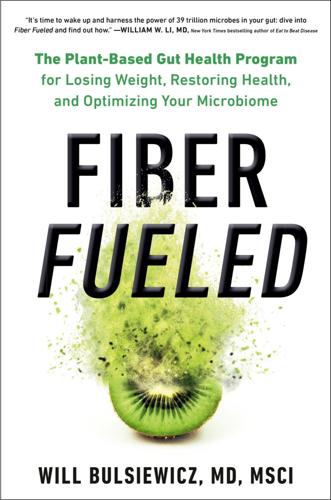
Fiber Fueled: The Plant-Based Gut Health Program for Losing Weight, Restoring Your Health, and Optimizing Your Microbiome
by
Will Bulsiewicz
Published 15 Dec 2020
We are most insulin sensitive in the morning and most insulin resistant in the evening. To optimize our eating patterns, we want to anchor our eating around the times that we need our fuel, and then allow our gut to rest for a period of time. This approach is called time-restricted eating, or TRE. Some call it intermittent fasting, but this isn’t intermittent. It’s a lifestyle that you sustain day to day. To properly do TRE, you have to do two things. First, you create time boundaries so there’s a period of food consumption and a period of sustained bowel rest. My recommendation is to rest your gut for at least thirteen consecutive hours, which means restricting your eating hours to eleven or less.
…
See also endocrine system hormones, livestock treated with, 33 Human Genome Project, 25 human milk oligosaccharides (HMOs), 56 hunger, constant, 51 hydration, 185–86 hygiene hypothesis, 13, 196 hyperlipidemia, 19 hypertension, 39 hypothyroid, 22 ibuprofen, 32, 37 immune system and exercise, 197 and fermented foods, 126 and phytochemicals, 80 resident in the gut, 13–14 SCFAs’ role in, 60–63 and sleep deprivation, 195 and sulforaphane in cruciferous vegetables, 164 and T cells, 61 and whole grains, 84 indigestion, 13 indoles, 81 industrial animal agriculture, 127 infections, 60, 164 infectious diseases, 32–33, 83 infertility, 22 inflammation and animal proteins, 44 and artificial sweeteners, 40 digestive distress mistaken for, 104 dysbiosis’s promotion of, 9, 19, 60 fermented foods’ reduction of, 124, 132 and gluten, 85–86 of the gut, 84 (see also inflammatory bowel disease) and high-fat diets, 42 of intestinal lining, 59 and intestinal permeability (leaky gut), 9, 59 and legumes, 88, 91 and NSAIDs usage, 32 as outcome of consuming unhealthy foods, 7–8 plants that address, 78 and saturated fats, 43 SCFAs’ ability to suppress, 60–63 and Standard American Diet, 39 and turmeric–black pepper combo, 82 and whole grains, 84, 91 inflammatory bacteria, 39, 46, 57, 84, 102, 104 inflammatory bowel disease (IBD), 37, 45, 46, 62, 143. See also Crohn’s disease insecticides, 33 insoluble fiber, 53, 56 Instagram, xxvi insulin, 17–18 insulin resistance, 18, 20, 36, 40, 91 insulin sensitivity, 19, 124, 132, 145, 165, 167, 193 intermittent fasting, 193 interstitial cystitis, 16 intestinal barrier function, 42 intestinal lining gut microbiota’s consumption of, 58 inflammation of, 59 NSAIDs’ effects on, 37 sulforaphane’s ability to repair, 165 intestinal permeability (leaky gut) about, 59 and alcohol consumption, 189 and animal proteins, 44 causes of, 9, 59 correction of, 44, 59–63 dysbiosis underlying, 9, 21 and gluten, 85–86 inflammation resulting from, 9, 59 and male reproductive hormones, 21 and plant proteins, 44 and release of bacterial endotoxin, 9, 43, 59 and saturated fats, 43 and stress, 199 and sulforaphane in cruciferous vegetables, 165 and whole grains, 86 inulin, 140 iron, 82 irritable bowel syndrome (IBS) and altered gut function/motility, 23, 59 butyrate’s beneficial effects on, 59 and coffee, 187 and food sensitivity, 95 and Paleo diet, 45 and prebiotic supplements, 138 prevalence of, 30, 95 and probiotic supplements, 143 and sourdough bread, 127 and visceral hypersensitivity, 23, 59 isoflavones, 88–89, 126 isomalto-oligosaccharide (IMO), 140 isothiocyanates, 81 jackfruit, 91 Jicama Fries, 333–34 joint pain, 13, 109 juices, 153, 188 kale, 81, 82, 92, 155, 156 karma, nutritional, 58 Kawasaki disease, 16 kefir, 134 kelp/kombu, 168 Keto diet, 46 ketogenic diet, xiv kidney disease, 19, 31, 44 kimchi benefits of, 132 Kimchi Fried Rice, 305–6 kissing, 21 Knight, Rob, 73, 74 kombucha, 135–36, 189 lactose and lactase enzyme, 101–2, 102, 112–13, 144 L-carnitine, 44 leaky gut.
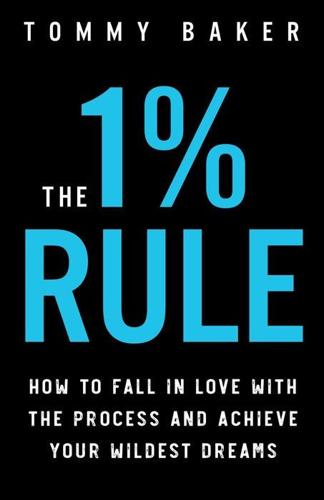
The 1% Rule: How to Fall in Love With the Process and Achieve Your Wildest Dreams
by
Tommy Baker
Published 18 Feb 2018
Primal yell. Find an open spot, ideally in nature where you can yell at the top of your longs. Shift and declare: 10 burpees, declare how you’re feeling in the moment (i.e. “Angry! Inspired! Hungry! Focused!). Spiritual Fitness Protocol. Cold water therapy or contrast showers. Intermittent fasting, 16-hour fast, 24-hour fast or 3-day fast. Spiritual fitness combines all of these and includes the following: Step 1: Find a place where you can sprint. Step 2: Identify a target to sprint towards. Step 3: Three deep inhales and exhales, eyes closed and imagining your vision as the target.
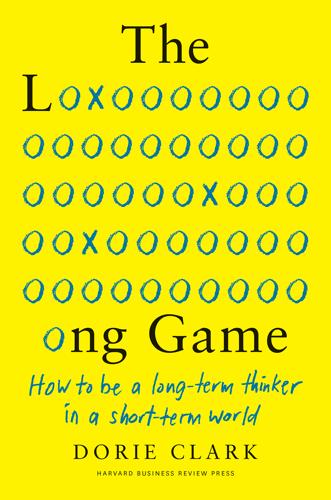
Long Game: How Long-Term Thinker Shorthb
by
Dorie Clark
Published 14 Oct 2021
Whatever is not important at all, you don’t schedule it at all. You get rid of it. You delegate it. You say no to it. If you start operating from the calendar rather than a to-do list, you take back control over your day.” It’s the productivity version of the quest for the perfect diet. Keto? Atkins? South Beach? Intermittent fasting? Actually, just eat less. Almost no one likes the results of the short-termism we see around us: the relentless frenzy, the endless hamster wheel, the aggressive pursuit of goals that quite possibly aren’t the right ones. But it takes strength to go against the prevailing culture. That’s both internal strength, because we have to face down uncomfortable questions about who we are and what we really want, and external strength, because we have to deal with bosses and colleagues and clients who are still used to measuring productivity through face time and volume.

Why We Get Fat and What to Do About It
by
Gary Taubes
Published 28 Dec 2010
Whichever group you fall into, though, if you’re not actively losing fat and yet want to be leaner still, the only viable option (short of surgery or the prospect that the pharmaceutical industry will come through with a safe and effective anti-obesity pill) is to eat still fewer carbohydrates, identify and avoid other foods that might stimulate significant insulin secretion—diet sodas, dairy products (cream, for instance), coffee, and nuts, among others—and have more patience. (Anecdotal evidence suggests that occasional or intermittent fasting for eighteen or twenty-four hours might work to break through these plateaus of weight loss, but this, too, has not been adequately tested.) Physicians who have treated patients by prescribing carbohydrate-restricted diets for a decade or longer and published discussions of their clinical experiences—the British physician Robert Kemp, for instance, who began doing so in 1956, and Wolfgang Lutz, an Austrian physician, who began a year later—have reported that a small proportion of their obese patients failed to lose any significant fat even though they faithfully avoid fattening carbohydrates (or at least said they did).

Elon Musk
by
Walter Isaacson
Published 11 Sep 2023
Kovac asked. “And everyone was worried I had quit?” Musk continued to stare blankly. He didn’t remember. The AI Day rehearsal After he had been photographed looking blubbery during his two-day Greek vacation with Ari Emanuel, Musk decided to go on the diet drug Ozempic and follow an intermittent fasting diet, eating only one meal per day. That meal, in his case, was a late breakfast, and his version of the diet allowed him to gorge as he pleased for that. At 11 a.m. on Wednesday, he went to the Palo Alto Creamery, a retro-hip diner, and ordered a bacon-cheese barbecue burger with sweet potato fries and an Oreo and a cookie-dough ice-cream milkshake.
…
He was sitting cross-legged and barefoot on the poolside patio of the Austin house of Shivon Zilis, the Neuralink executive who was the mother of two of his children and who had been his intellectual companion on artificial intelligence since the founding of OpenAI eight years earlier. Their twins, Strider and Azure, now sixteen months old, were sitting on their laps. Musk was still on his intermittent-fasting diet; for his late brunch, he had doughnuts, which he had begun eating regularly. Zilis made coffee and then put his in the microwave to get it superhot so he wouldn’t chug it too fast. A week earlier, Musk had texted me, “There are a few important things I would like to talk to you about.

The Buddha and the Badass: The Secret Spiritual Art of Succeeding at Work
by
Vishen Lakhiani
Published 14 Sep 2020
As a single dad, I rush the kids off to school, and then I want to eat breakfast for fuel, not ritual. So I optimize my breakfast. For me this might be a protein shake laden with organic superfoods like powdered kale, wheatgrass, or spirulina. And once or twice a week I skip breakfast altogether to practice intermittent fasting. This is a way to replenish your biology by giving your body a break from digesting food for a period of twelve to sixteen hours. So if my last meal was at 8:30 p.m. the night before, by skipping breakfast the next day and going straight to lunch at 12:30 I give my body a sixteen-hour fast.

Quackery: A Brief History of the Worst Ways to Cure Everything
by
Lydia Kang
and
Nate Pedersen
Published 16 Oct 2017
The Mayo Clinic advises eating a healthy diet based on fruits and vegetables, whole grains, and lean sources of protein as a better alternative, with longer-lasting benefits, than going on a detox diet. Which isn’t to say that fasting is all bad. Recent animal studies have demonstrated that intermittent fasting for short periods of time may slow aging, protect against stroke damage, and slow cognitive decline. But extended fasting is, and always has been, incredibly dangerous. Just add cayenne pepper and you’ve got yourself a Master Cleanse. The Weight Loss Hall of Shame Humans have long been on a tumultuous journey to fight gluttony and achieve an elusively perfect figure.
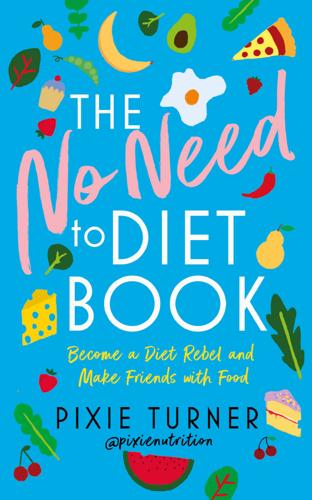
The No Need to Diet Book: Become a Diet Rebel and Make Friends With Food
by
Plantbased Pixie
Published 7 Mar 2019
, the popular Hay diet, Weight Watchers, and the ever-famous Cabbage Soup diet, followed by Atkins and the low-carb revolution that spanned all the way from the 1960s to the early 2000s. Meal-replacement shakes started catching on in the 1970s, which certainly paved the way for the juice and smoothie trend. Now we have weight-loss groups, veganism, low-carb, low-fat, fruitarians, carnivores, juice cleanses, intermittent fasting, detoxes – the works. For a long period of history, food was scarce and so having more than you needed was a sign of wealth and power. But now there is so much food to go around and the power dynamic has shifted. An abundance of food is no longer desirable, so instead we prize having willpower to refuse this abundance.
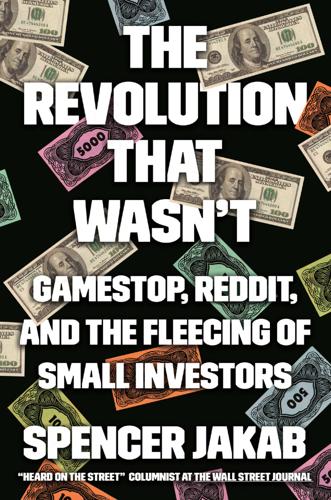
The Revolution That Wasn't: GameStop, Reddit, and the Fleecing of Small Investors
by
Spencer Jakab
Published 1 Feb 2022
Rapid growth and more funding rounds followed, and by 2018 their company was valued at $6 billion, making the then thirty-one-year-old Tenev and thirty-three-year-old Bhatt billionaires.[6] The cult of Silicon Valley hero worship of young merchant princes soon followed, and the men were asked about their daily routines (Bhatt wakes early and practices intermittent fasting; Tenev rarely stays up late and enjoys reading classics such as Plato’s Republic and Sun Tzu’s The Art of War).[7] Key to the success of Robinhood is that, unlike Charles Schwab, Fidelity, or TD Ameritrade, it was born in modern Silicon Valley. Even compared with those competitors that got their start during the dot-com era, it had an edge because it grew up after the smartphone had been invented.
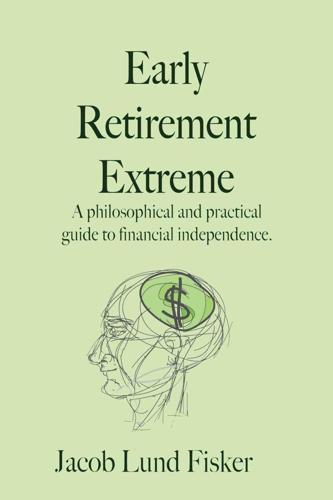
Early Retirement Extreme
by
Jacob Lund Fisker
Published 30 Sep 2010
The body uses the most easy-to-get fat first--typically the fat on the face, forearms, and calves; and the stubborn fat last--typically on the belly and hips (love handles). All you can do is reduce overall fat. (91) This is the reason restaurants serve high-glycemic foods like bread or tortillas and then make you wait a long time to order, in the hopes that you have developed a sense of hunger or, more euphemistically, worked up an appetite. (92) "Intermittent fasting dissociates beneficial effects of dietary restriction on glucose metabolism and neuronal resistance to injury from calorie intake.," R.M. Anson et. al. Proc. Natl. Acad. Sci. U. S. A., 100(2003)6216. (93) It's therefore possible to eat a simple diet consisting of just a few different kinds of properly designed meals, as long as they include all the necessary macro and micronutrients.
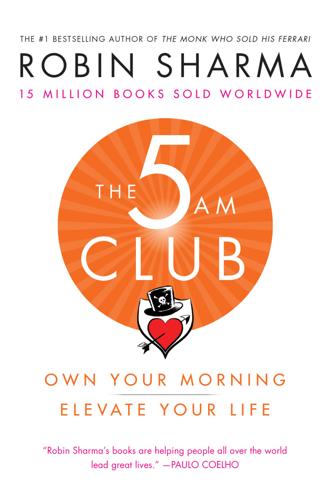
The 5 AM Club: Own Your Morning. Elevate Your Life.
by
Robin Sharma
Published 4 Dec 2018
Aging shortens our telomeres, which is why they are sometimes compared to a bomb fuse. The powerful point here is that it’s well-documented that exercise slows this shortening, helping you stay healthy longer. You should also note that meditation, a diet rich in whole foods, proper sleep quality and intermittent fasting (which The Spellbinder calls The 16/8 Dividend because you don’t eat during a sixteen-hour fasting window and then break the fast over an eight-hour period) have all proven to protect our telomeres from degenerating. Given the empirically based facts substantiating the absolutely transformative power of exercise, why would you do only one workout a day?
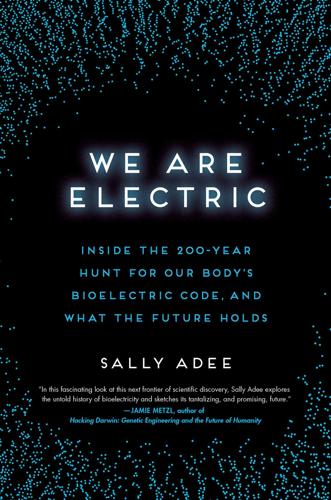
We Are Electric: Inside the 200-Year Hunt for Our Body's Bioelectric Code, and What the Future Holds
by
Sally Adee
Published 27 Feb 2023
When I caught my first glimpse of this strange new use for electricity in 2009, it was the stuff of obscure medical trials and secret military projects. Today, the notion of wearing an electrical stimulator on your head isn’t as foreign as it seemed back then; it’s certainly the kind of thing you can imagine someone in Silicon Valley doing for a little extra mental edge, alongside intermittent fasting or microdosing psilocybin. But it’s not just about boosting your brainpower with a volt jolt—there are many other ways electricity is being used to treat the ailments of body and mind. Take deep brain stimulation, a treatment of last resort for Parkinson’s disease, in which two electrodes the size and shape of uncooked spaghetti are slid into the deepest parts of your brain to quiet the disease’s destructive symptoms.
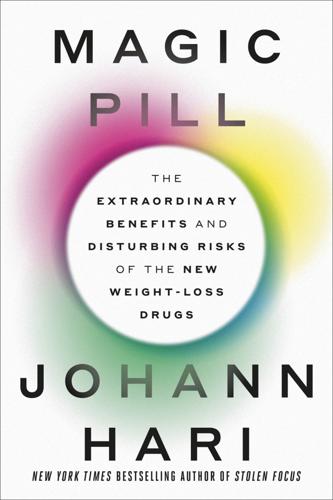
Magic Pill: The Extraordinary Benefits and Disturbing Risks of the New Weight-Loss Drugs
by
Johann Hari
Published 7 May 2024
For all my obvious doubts about Ozempic, I also wondered: Could this possibly be the way to break some of the danger that my own health was in? I learned that several people I knew were already taking the drug. The men would admit it quite freely, while the women would offer long stories about intermittent fasting or a fantastic new spa, and then quietly concede that, yes, they were on it too. I could see weight was falling off them, and their doctors were telling them that all their key indicators of health were dramatically improving. I was full of doubt—about my weight, and these drugs, and about the future.

Supremacy: AI, ChatGPT, and the Race That Will Change the World
by
Parmy Olson
They have simply disappeared from view, which means language models like GPT-3 don’t see them either. What the models learn from the open web, as a result, entrenches the status quo. The same can happen to other cultural ideas that flash across the web, from conspiracy theories and trendy diets like intermittent fasting to long-standing stereotypes that poor people are lazy, politicians are dishonest, or old people are resistant to change. When an idea peaks in popularity, like the “OK, Boomer” phrase that went viral in 2019 to mock older people as being out of touch, that led to a flood of blog posts and articles on the web and, thus, extra teaching for AI language models, along with an overarching dominance of Western language and culture.
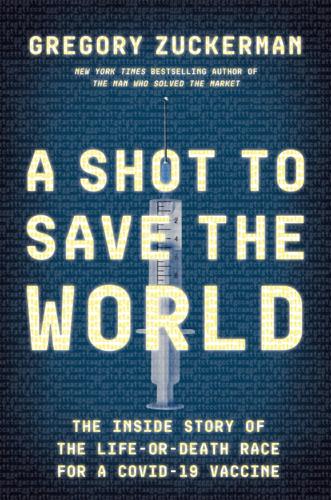
A Shot to Save the World: The Inside Story of the Life-Or-Death Race for a COVID-19 Vaccine
by
Gregory Zuckerman
Published 25 Oct 2021
We can do better. . . . People are dying out there.” By the summer of 2021, many Moderna executives found it difficult to sleep, or they developed back pain or other ailments. They all battled exhaustion. Some took aggressive steps to try to maintain their health. Bancel, Hoge, and Andres embraced intermittent fasting, for example, and Andres built a standing treadmill at his desk, setting a goal of 25,000 steps each day. Hoge’s own goal had nothing to do with a vaccine or a new exercise. He just wanted to help his staffers recover their emotional health. “There are a lot of broken people here,” he says.

A Hunter-Gatherer's Guide to the 21st Century: Evolution and the Challenges of Modern Life
by
Heather Heying
and
Bret Weinstein
Published 14 Sep 2021
When a hunter-gatherer finds honey that he can separate from its bees, he and his friends will likely gorge on it, for there is no knowing when the next burst of sugary goodness will come their way again.32 But since food resources are no longer scarce, gorging is not an effective strategy, because the scarcity never comes. Instead, we get more opportunities to gorge. We have to willfully override our evolutionary impulses in order not to suffer the hyper-novelty that the twenty-four-hour grocery store provides. Putting yourself on a schedule, as intermittent fasting recommends, of not eating for regular periods of time seems to be a healthful corrective. Do not forget that food is social lubrication for humans. Eating alone in your car after visiting the drive-through is a novel situation, and it’s not helping us connect with our food, our bodies and their needs, or one another.

Billionaires' Row: Tycoons, High Rollers, and the Epic Race to Build the World's Most Exclusive Skyscrapers
by
Katherine Clarke
Published 13 Jun 2023
“I walked with my wife on the beach.” For Michael Stern, too, a strange sense of calm had taken over. Having fled to his waterfront home in Miami, he took the opportunity to get a handle on his health by getting up at four thirty for sessions with his personal trainer and starting a new regime of intermittent fasting. He lost more than forty pounds. He was also working on building a new mansion for himself on Miami’s tony North Bay Road, which has drawn celebrities like Matt Damon and Jennifer Lopez. He tapped Bill Sofield, the interiors guru behind 111 West 57th Street, to design it. With the world shut down, he knew there was nothing he could do to get sales moving at the project, no matter how hard he tried.
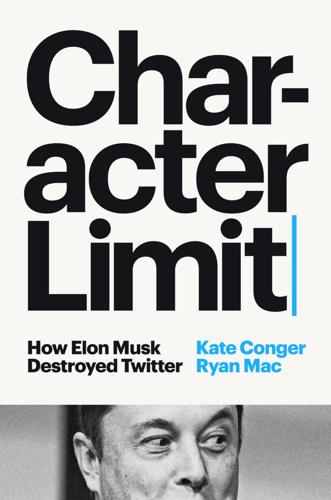
Character Limit: How Elon Musk Destroyed Twitter
by
Kate Conger
and
Ryan Mac
Published 17 Sep 2024
Consuming food might seem like a normal human activity, but for Dorsey it was anything but. Years in the spotlight had changed him. He was less relatable, and even less accessible, as he juggled the management of Twitter and Square. The snack represented his first meal of the day. He habitually skipped meals in an intermittent fasting exercise that had become popular among Silicon Valley engineers. The booze was also catching up to him. Sitting in the hotel bar—complete with low-slung leather couches, blazing fireplace, and mood lighting—Dorsey and his entourage of Twitter vice presidents and directors threw back top-shelf tequila.

Never Bet Against Occam: Mast Cell Activation Disease and the Modern Epidemics of Chronic Illness and Medical Complexity
by
Lawrence B. Afrin M. D.
,
Kendra Neilsen Myles
and
Kristi Posival
Published 15 Jan 2016
She said the symptoms this time included “waves of nausea 24 x 7” which were not relieved with scopolamine (an anti-nausea drug commonly used for seasickness) or famotidine (a “histamine H2 receptor blocker” used mostly to reduce stomach acid), episodes of assorted spots of intense itching on exposure to heat (whether sun or bathing), insomnia, fatigue, intermittent dizziness and lightheadedness, intermittent fast pulse (“tachycardia”) upon minimal exertion, soaking sweats at night, decreased exercise endurance, diffuse swelling (more so in the legs than her arms), and a couple days of great difficulty initiating her urine stream. The day after the visit to the dermatologist, all of these symptoms suddenly vanished, but then, about four days later, she developed shortness of breath and tachycardia with minimal exertion, and on attempting to exercise that day, she found a blood pressure during exercise of 180/104 compared to her normal 140/76 with exercise.
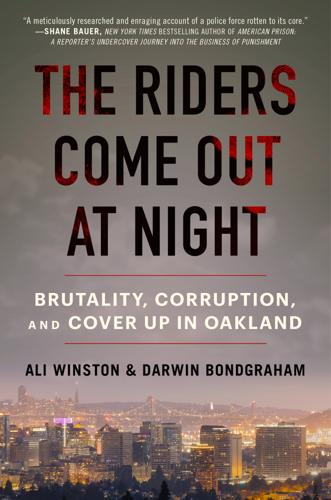
The Riders Come Out at Night: Brutality, Corruption, and Cover-Up in Oakland
by
Ali Winston
and
Darwin Bondgraham
Published 10 Jan 2023
Ibid., 109–11. 51. Elijah Muhammad’s dietary advice has long been one of the NoI’s ways of making inroads in the African American community, eschewing the unhealthy, processed food, starch, and cholesterol-heavy diet of twentieth-century American culture for whole grains, fresh vegetables, fish, and intermittent fasting. 52. Peele, Killing the Messenger, 159–63. 53. Ibid., 169–70. 54. Ibid., 165–66. 55. George Raine, “Muslim Stirs Anger in Oakland,” San Francisco Examiner, May 14, 1994, A7. 56. “They have no concern for us.… We’re like, ‘Go down to the zoo and work eight hours,’ ” Bey said. “They’re out of touch.